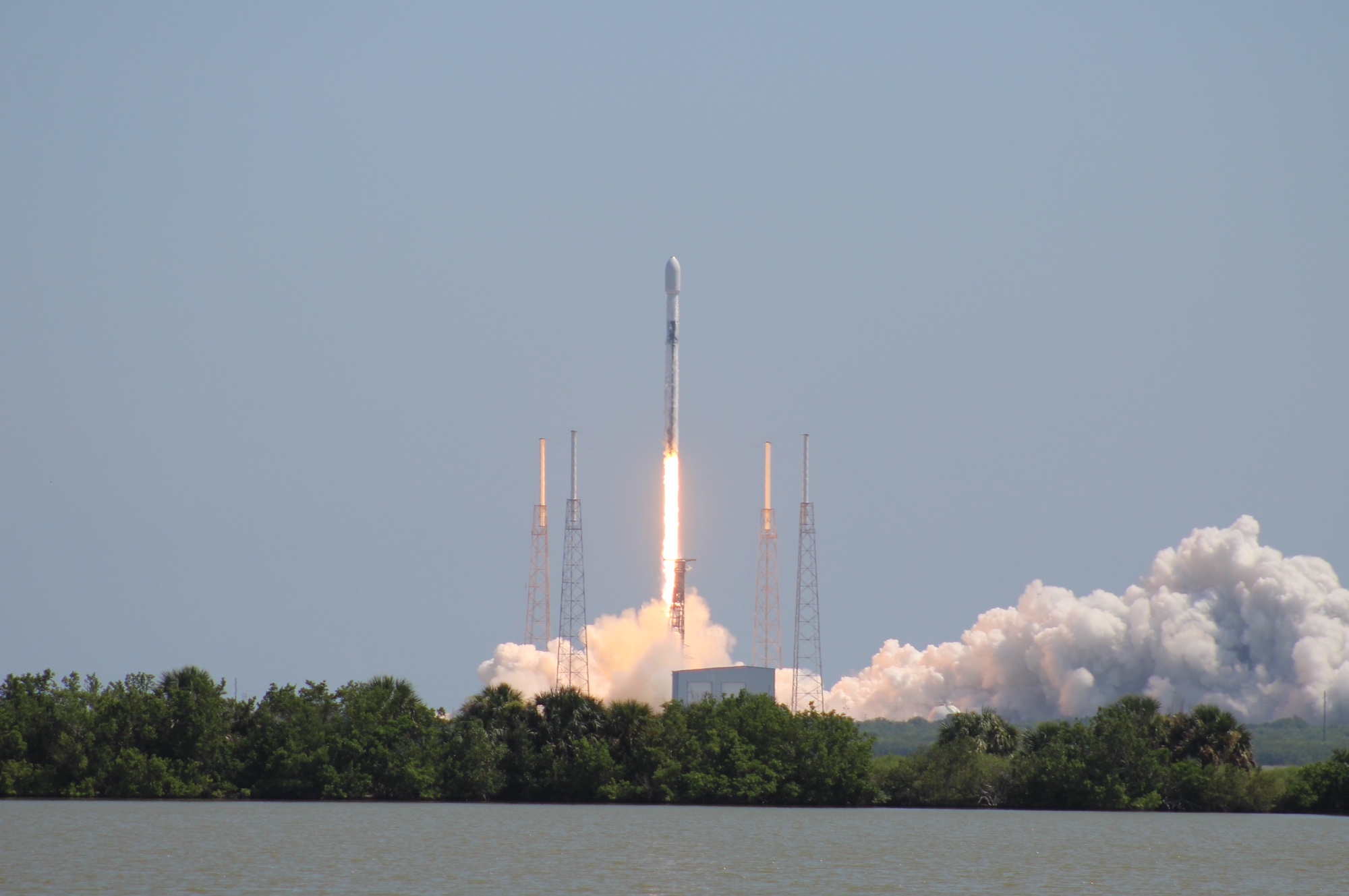Products You May Like
CAPE CANAVERAL, Fla. — A European mission to unravel some of the biggest mysteries in the universe is underway thanks to a launch from an American rocket.
A SpaceX Falcon 9 lifted off at 11:12 a.m. Eastern July 1 from Cape Canaveral’s Space Launch Complex 40. The rocket deployed its payload, the European Space Agency’s Euclid spacecraft, 41 minutes later after placing it on a trajectory to the Earth-sun L-2 Lagrange point. The rocket’s booster, on its second flight after launching the Ax-2 private astronaut mission in May, landed on a droneship in the Atlantic Ocean.
“It was really a fantastic launch,” said ESA Director General Josef Aschbacher at a post-launch briefing. “This is a very important mission for the European Space Agency.”
The two-ton Euclid spacecraft, built by Thales Alenia Space, will spend a month traveling to the L-2 point, 1.5 million kilometers from the Earth in the direction opposite the sun. Once there, it will undergo a two-month commissioning period before beginning its science mission.
Carole Mundell, ESA’s director of science, said that commissioning work includes turning on the two main instruments on the spacecraft and calibrating the data, while also confirming the thermal stability of the system. “The optics are so precise we should have diffraction-limited images, so we want to make sure we are getting that quality of images and that our spectra are as we expect.”
The 1.4-billion-euro ($1.5 billion) mission will spend six years conducting a detailed survey of one third of the sky using a visible camera and near-infrared spectrometer and photometer. Astronomers will use those observations of millions of galaxies to test the validity of various models for dark matter and dark energy, which together comprise 95% of the universe.
Scientists involved with the mission are optimistic that Euclid’s observations will help them understand the nature of dark matter and dark energy. “It’s a really great time to be a cosmologist,” said Henk Hoekstra, a member of the 2,000-person Euclid Consortium of scientists and engineers who have worked on the mission, during a pre-launch briefing June 30. “The launch of Euclid really changes cosmology into the future.”
Euclid will collect a massive amount of data: an estimated 170 petabytes (one petabyte is 1,000 terabytes) over its planned six-year mission. That will be augmented by complementary surveys by several ground-based telescopes. Nine data centers, eight in Europe and one in the United States, will archive the data.
Although Euclid was developed for cosmology, project scientists say the data should be useful for a wide range of other studies, from objects in our solar system to the evolution of galaxies. “This dataset will be transformational across a huge range of astrophysics projects,” said Jason Rhodes, chair of the Euclid Consortium Board. “This is data that is going to be mined by astrophysicists for decades to come.”
NASA’s Nancy Grace Roman Space Telescope, under development for launch in 2027, will perform dark energy studies similar to Euclid. “It will be doing similar science but in a different way,” said Nicola Fox, NASA associate administrator for science, after the launch. She said the two missions should be complementary in much the same was as NASA’s Parker Solar Probe and ESA’s Solar Orbiter missions to study the sun. “The partnership with Euclid and Roman is going to unlock so much of our dark universe.”
While NASA is a partner with ESA on Euclid, providing infrared detectors for one of its instruments, the launch took place from Florida because of a contract ESA signed with SpaceX. ESA turned to the Falcon 9 after losing access to the Soyuz rocket, originally selected to launch the mission, after Russia’s invasion of Ukraine last year.
“We owe them a huge thanks. Without them our satellite would be sitting on the ground for two years,” Mike Healy, head of science projects at ESA, said of SpaceX before the launch.
The first discussions with SpaceX were in May of 2022, he said, followed by feasibility studies and testing to ensure Euclid was compatible with the Falcon 9. While ESA announced in October its intent to launch Euclid and another mission, Hera, on the Falcon 9, the agency did not sign a final contract with SpaceX until the end of January.
“We had to squash what we normally do in three years into five months,” he said of the switch to the Falcon 9. That required dealing with a number of challenges ranging from technical issues if integrating the spacecraft with the rocket to dealing with U.S. export control policies.
“I’m very happy with the relationship we have with SpaceX,” said Giuseppe Racca, Euclid project manager at ESA, before the launch. “They are incredibly skilled in problem solving. It’s a most valuable experience.”
